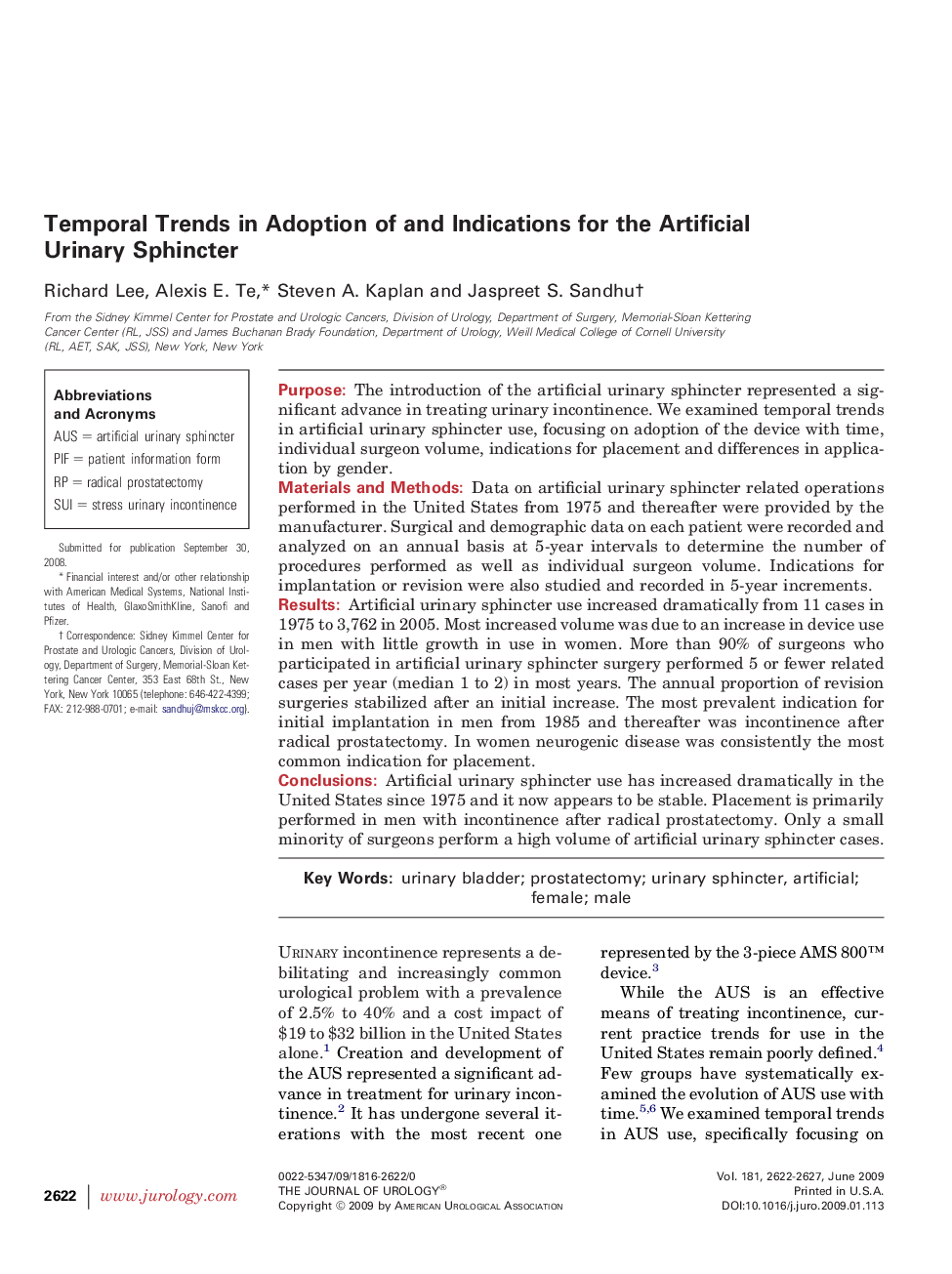| Article ID | Journal | Published Year | Pages | File Type |
|---|---|---|---|---|
| 3871545 | The Journal of Urology | 2009 | 6 Pages |
PurposeThe introduction of the artificial urinary sphincter represented a significant advance in treating urinary incontinence. We examined temporal trends in artificial urinary sphincter use, focusing on adoption of the device with time, individual surgeon volume, indications for placement and differences in application by gender.Materials and MethodsData on artificial urinary sphincter related operations performed in the United States from 1975 and thereafter were provided by the manufacturer. Surgical and demographic data on each patient were recorded and analyzed on an annual basis at 5-year intervals to determine the number of procedures performed as well as individual surgeon volume. Indications for implantation or revision were also studied and recorded in 5-year increments.ResultsArtificial urinary sphincter use increased dramatically from 11 cases in 1975 to 3,762 in 2005. Most increased volume was due to an increase in device use in men with little growth in use in women. More than 90% of surgeons who participated in artificial urinary sphincter surgery performed 5 or fewer related cases per year (median 1 to 2) in most years. The annual proportion of revision surgeries stabilized after an initial increase. The most prevalent indication for initial implantation in men from 1985 and thereafter was incontinence after radical prostatectomy. In women neurogenic disease was consistently the most common indication for placement.ConclusionsArtificial urinary sphincter use has increased dramatically in the United States since 1975 and it now appears to be stable. Placement is primarily performed in men with incontinence after radical prostatectomy. Only a small minority of surgeons perform a high volume of artificial urinary sphincter cases.
